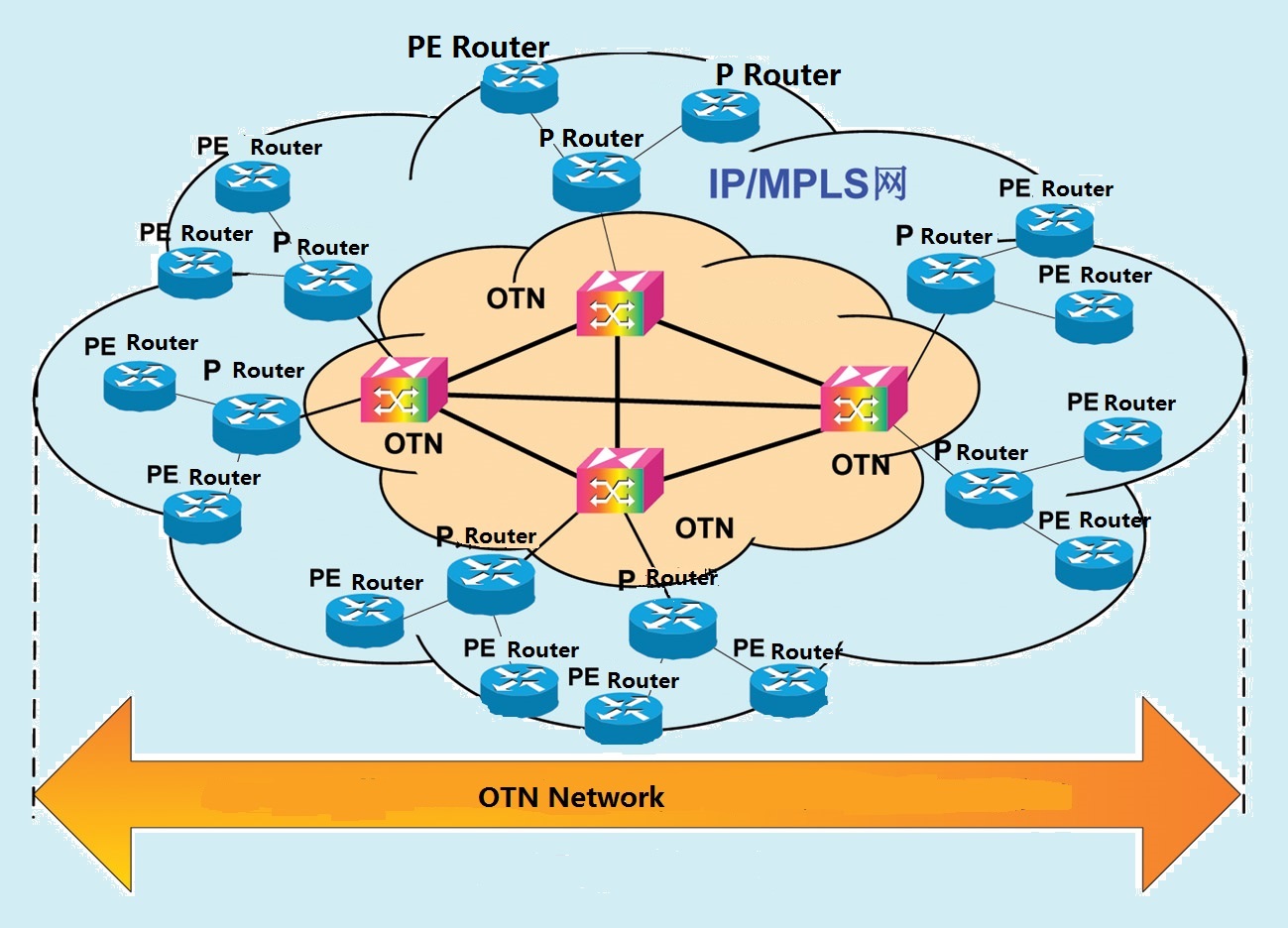
In order to achieve 400G long-haul (LH) transmission, three 400G Optical Transport Network (OTN) technologies come into being to meet the needs: single-carrier 400G, dual-carrier 400G, and quad-carrier 400G. They differ from each other mainly in the number of wavelengths used for transmission. This post will reveal what they are and their respective pros and cons.
Single-Carrier for 400G OTN
Single-carrier 400G, or single-wavelength 400G, means there is 400G capacity on a single wavelength. The single-carrier 400G adopts high-order modulation formats such as PM-16QAM, PM-32QAM and PM-64QAM. Normally, a single-carrier for 400G optical transport network is used only in network access, metro, or DCI (Data Center Interconnection) transmission.

Figure 1: Single-Carrier for 400G OTN
Take PM-16QAM (Polarization-Multiplexed-16 Quadrature Amplitude Modulation) as an example. PM refers to a process where the 400G (448Gbit/s) optical signal is separated into two signals and modulated to transmit in two polarization directions – X and Y, which can cut the original signal rate in half (224Gbit/s). QAM is a process of separating the signals in X and Y to further reduce the rate. 16 stands for 4 bits, which means the signal in X and Y is respectively divided into 4 signals and the rate will accordingly decrease to 1/4 on the basis of the previous 224Gbit/s. By using PM-16QAM, the signal rate at this moment becomes 56G Baud (the rate of electrical processing).
Note: Because in current circuit technology, 100Gbit/s has approached the limit of the electronic bottleneck. If the Baud continues to increase, problems like signal loss, power dissipation, and electromagnetic interference will remain a hassle, which will, even if solved, require tremendous costs.

Figure 2: PM-16QAM
Pros of Single-Carrier for 400G Optical Transport Network
- Compared with the multi-carriers scheme, single-carrier 400G is an easier wavelength allocation solution with simpler structure and smaller size that can provide easy network management and low power consumption.
- With higher-order QAM, single-carrier for 400G OTN network can increase signal rates and spectrum efficiency, which will significantly expand network capacity and increase the number of users to support.
- Also, with high system integration, it can connect the separate subsystems into a complete one and make them work in coordination with each other and achieve the best overall performance.
Cons of Single-Carrier for 400G Optical Transport Network
Since single-carrier for 400G OTN network adopts more advanced QAM, it requires a higher OSNR (Optical Signal Noise Ratio) and greatly reduces transmission distance (less than 200km). Also, single-carrier is more susceptible to laser phase noise and fiber nonlinear effects. Therefore, it is the best solution only for some specific applications that don’t require ultra long-haul transmission distance, but need large bandwidth capacity.
Dual-Carrier for 400G OTN
Dual-carrier 400G, also named dual-wavelength 400G, offers 400G capacity via two 200G wavelengths. The dual-carrier 400G system based on the 2× 200G super-channel scheme adopts lower-order modulation formats like PM-QPSK (Quadrature Phase Shift Keying, a symbol represents two bits, which means the rate is reduced to 1/2), PM-8QAM or PM-16QAM. Dual-carrier for 400G optical transport network is applied in more complex metro networks to achieve 400G long-haul transmission.

Figure 3: Dual-Carrier for 400G OTN
Pros of Dual-Carrier for 400G Optical Transport Network
- The spectrum efficiency of dual-carrier 400G has increased by more than 165%, with relatively high system integration, small size, low power consumption. Dual-carrier 400G is regarded as the most commonly-used technology for 400G OTN.
- The span of dual-carrier 400G is longer than single-carrier 400G, which can reach up to 500km for commercial use. When deployed with low-attenuation fiber optic cable and EDFA (Erbium Doped Fiber Amplifiers), dual-carrier for 400G OTN network can cover more than 1000km, which can basically satisfy the 400G long-haul transmission application.
Cons of Dual-Carrier for 400G Optical Transport Network
Even with low-attenuation fiber optic cable and EDFA, dual-carrier 400G still fails to reach as long as quad-carrier 400G does, not suitable for ultra long-haul (ULH) transmission over 2000km.
Quad-Carrier for 400G OTN
Quad-carrier 400G refers to a solution that offers 400G capacity through four 100G wavelengths. It is achieved by constructing a 400G super-channel based on 100G PM-QPSK with four carriers, suitable for ultra long-haul (ULH) transmission over 2000km.

Figure 4: Quad-Carrier for 400G OTN
Pros of Quad-Carrier for 400G Optical Transport Network
- Quad-carrier for 400G OTN network adopts the mature 100G transmission technology that has been widely-used for commercial purpose.
- It can achieve ultra long-haul transmission of more than 2000km at relatively low cost.
Cons of Quad-Carrier for 400G Optical Transport Network
Quad-carrier 400G system makes sense only when spectrum compression technology is introduced to improve spectrum efficiency, and the 100G chip is upgraded to solve the problems of integration and power consumption. Otherwise, a 400G system built on the current 100G chip is essentially a 100G system.
Conclusion
In all, 400G long-haul transmission is mainly realized by single-carrier, dual-carrier and quad-carrier. Single-carrier for 400G OTN network can only cover a distance of less than 200km; dual-carrier for 400G OTN network is the ideal solution for MAN transmission (with PM-16QAM) and medium long-haul transmission (with PM-QPSK); quad-carrier for 400G OTN network has the same transmission distance as 100G and is appropriate for ULH transmission. As global data traffic keeps climbing, there is no end to bandwidth demands. While it may take time to transit to 400G, you can learn about What’s the Current and Future Trend of 400G Ethernet? to make preparations first.
Original Source: 400G OTN Technologies: Single-Carrier, Dual-Carrier and Quad-Carrier

